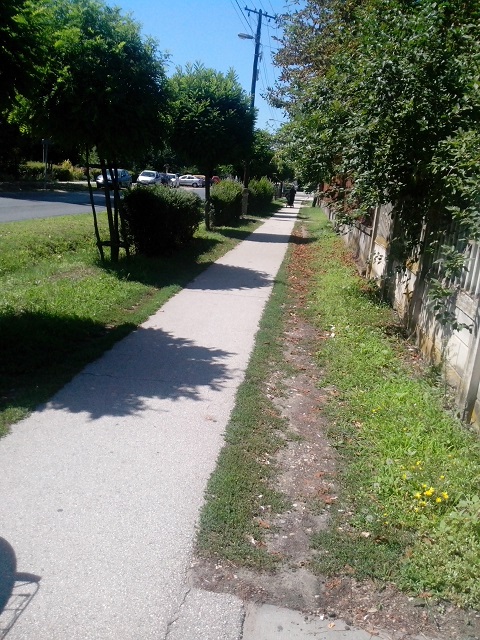- hu
- en
Preparing for and Managing Disasters
The Problem

Pilis is affected by climate change in a number of ways:
- Heavy snowing and ice endanger transportation, increasing the risk of accidents.
- Extensive exposure to the sun and UV radiation damages horticultural production.
- Severe hails damage horticultural and agricultural products as well as vehicles.
- The town is rather green although with more green surfaces (with lawns) than green areas (with trees and shrubs). Intense storms bring down trees and shrubs, and the disposal of green refuse is problematic for the local residents.
- Many of the transformers and wooden pylons are out-worn, making the power supply system sensitive to the more and more frequent intense storms and thus causing power-cuts.
- Heavy snowing and ice endanger transportation, increasing the risk of accidents. The railway station is the only one in the close region so it is of central importance to people from several nearby settlements. Train accidents are rather frequent in the area and in case of an extreme weather event, it is Pilis Municipality’s responsibility to take care of the people not only within the accident but those who are stuck in a train due to the accident.
The Solution
The Government Office of the District and the Disaster Management Authority organise a regular training for the mayors of the District. The training provides theoretical background on the one hand and practical exercises on the other hand on handling emergencies. Mayors learn about the preparation of plans and each of them are put into imitated problem situations that become more difficult every 5 minutes. These practical situations are then examined and assessed together by all mayors and the organisers.
Mayors from the same district have a very good working relationship and are used to call each other in problematic situations to find out if the others have had such experience and to learn from each other.
The municipality has not only the obligatory emergency plan required by the Disaster Management Authority but also a ‘non-official’ one in parallel. The non-official emergency plan has been developed on the basis of experience from life, ie. after a negative situation, in order to avoid that it is ever repeated, the mayor, the head of the urban management company, a representative of the disaster management authority and other professionals examine and assess the situation and the solution ex-post and build the lessons learnt into the plan.
The Mayor of Pilis has served since 2014. She operates several communication channels with the local residents such as an innovative Facebook page for the municipality (with appr. 1500 followers, which amounts to nearly 13% of the population), the webpage of the municipality, a weekly spot on the radio and a local magazine published every two months. Besides, the traditional communication channels of several bulletin boards over the settlement are also available. These communication channels can be used to inform people about (possible) emergencies and educate them how they can prevent or mitigate adverse effects of extreme weather events.
In case of emergencies, the Mayor shows example by proactively working on the field herself – eg. eliminating fallen trees from roads with rangers. She constantly carries several tools and instruments in her car that can be useful during such an action. She is also not reluctant to go ahead with works that can be efficiently solved within the municipality’s competences, even if they are not responsible for resolving a problem. For instance, the municipality cleans away the snow from the railway station, from bus stations and the main roads even if it would be the responsibility of the transport companies / road management authority, the large organisation and/or lack of capacity of which does not allow for so rapid actions.
The municipality has a heatwave plan, which uses the above-mentioned communication channels in case of a heat alert. In case of a heatwave, besides the awareness raising and education of the people, the municipality takes also an active role: it turns some fire hydrants into drinking-fountains (close to the doctor’s office and playgrounds), and they also offer climatised room in the municipality’s building for those in need and widely announce the opportunity.
Success factors:
- Personal commitment of stakeholders including the Mayor, the management of the District and the local representatives of the Disaster Management Authority, the personnel of the Green Nurseries and Schools as well as the benevolent economic entities
- Regular trainings for emergency situations, ex-post assessment of real situations
- Appropriate communication channels between active actors and towards local residents
The Lessons
Although the settlement has no comprehensive adaptation strategy and lacks financial resources, the case proves that personal commitment in leadership as well as cooperation from the wider society can achieve major successes. It is also a good example how continuous learning and reflection must be built into activities to effectively tackle emergencies including events occurring due to climate change.
The regular emergency trainings initiated by the Government Office of the District need to be highlighted as an innovative tool to contribute to keeping the settlements’ functionality and the population’s safety.